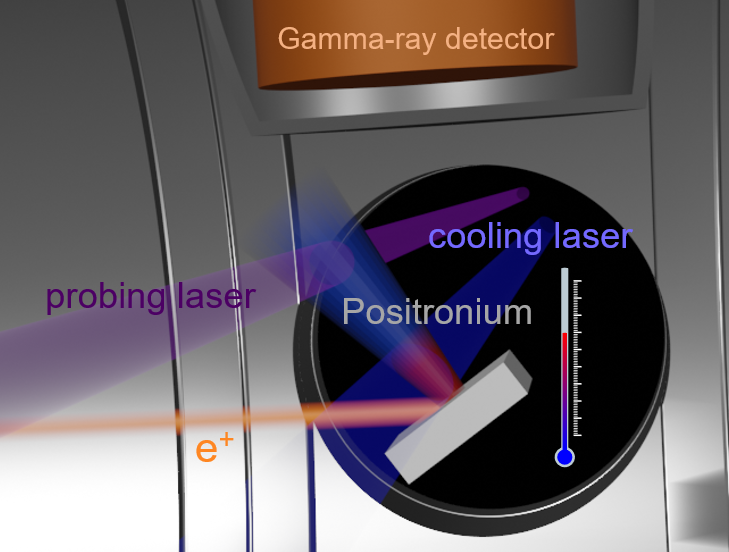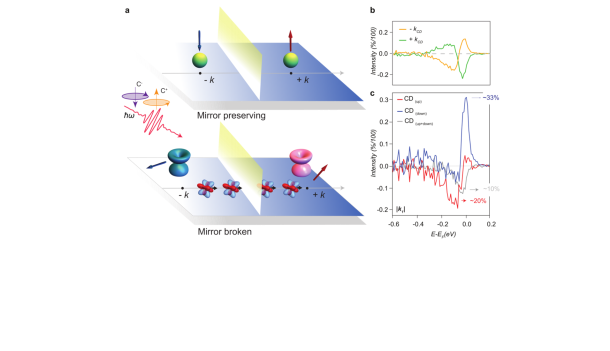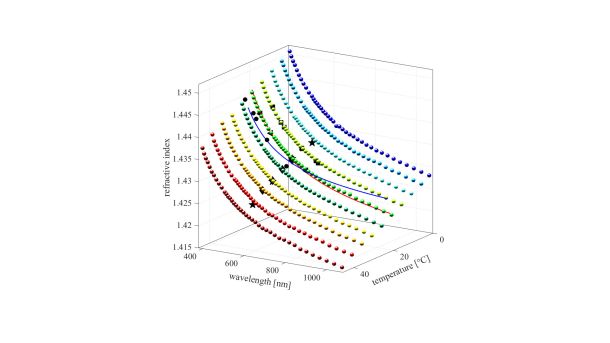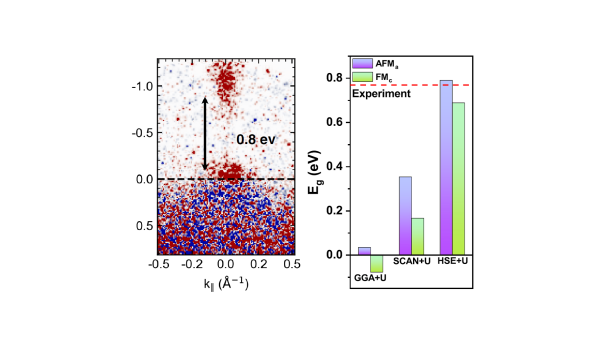
- Homepage
- Science
- Research highlights
- Research highlights
- Laser cooling of atoms containing antimatter

The cloud of exotic atoms made up of matter and antimatter was cooled by more than 200 degrees in a controlled manner. The international team of scientists from the AEgIS experiment working at CERN has made the first experimental demonstration of laser cooling of positronium atoms. This is another step on the way to precisely controlling the bound states of matter and antimatter.
The results have been published in the prestigious journal Physical Review Letters and, due to their exceptional scientific value, have been featured by the editors in the "Editors' Suggestion" section. Positronium is the lightest exotic atom consisting of mutually orbiting electron and its antimaterial counterpart positron. The existence of positronium was predicted independently in the 1940s by A. E. Ruark [1] and J. A. Wheeler [2], and first experimentally confirmed in 1951 by M. Deutsch [3]. The most challenging experimental problem in the study of positronium atoms is their extremely short lifetimes associated with the very high probability of annihilation of orbiting particles. Depending on the mutual orientation of the spins of the electron and positron, this time is only 0.12 ns (antiparallel orientation) and as low as 140 ns (parallel orientation). It turns out, however, that in the latter case, this is enough time to cool this unusual atomic gas in a controlled manner using appropriately tuned laser beams from a temperature of about 380K to about 170K.
Laser cooling of an atomic gas is a well-established for over 40 years method of reducing the average velocity of atoms forming the gas [4]. Its performance is based on the Doppler effect. The atomic gas is illuminated by a laser beam whose frequency is slightly lower than the frequency of the selected excitation of the atom at rest. This means that the atom at rest cannot absorb a photon of such radiation, since its frequency is not properly tuned. However, since the atoms forming the gas move chaotically in different directions, due to the Doppler effect they "see" photons with a frequency slightly shifted with respect to the frequency of the laser. Atoms moving away from the source "see" photons with a lower frequency, and those approaching the source with a slightly higher frequency. The latter therefore collide with photons whose frequency is more closely matched to the atom's excitation energy and are thus much more likely to be absorbed. Any absorption of a photon traveling in the direction opposite to the motion of the atom is associated with a reduction of the atom's momentum and its velocity decreases. Of course, a moment after the photon is absorbed by the atom, its spontaneous emission occurs. However, due to the nature of this process, the direction in which the photon is emitted is completely random. This means, therefore, that repeatedly absorbing photons from the laser beam by atoms approaching the source and emitting them in a random direction must lead to a decrease of the average velocity of all atoms forming the gas and thus a decrease of its temperature. Such a scheme was used in the process of cooling the positronium atomic gas in the AEgIS experiment.
The AEgIS (Antihydrogen Experiment: Gravity, Interferometry, Spectroscopy) is one of several experiments of the Antimatter Factory complex located at CERN, where precision investigations of systems composed of matter and antimatter are carried out. Its primary purpose is to perform a precise verification of the so-called Weak Equivalence Principle for electrically neutral objects composed of antimatter. This principle was first formulated by Galileo Galilei and states that all bodies with mass, regardless of their internal structure and shape, fall with the same acceleration in a given gravitational field. It was later a key component of the Newton’s Law of Universal Gravitation, in which gravitational mass is the same as inertial mass. Although Newton's theory of gravitation had to be generalized by Einstein to the case of extremely massive bodies, the Weak Equivalence Principle remained valid, i.e., for material objects, on all possible scales (from atomic to astronomical), no deviations from it were found. Experimental verification of the Principle for antimatter will be carried out by comparing the free fall of hydrogen and antihydrogen atoms in the Earth's gravitational field. For this purpose, the cooled-down cloud of positronium atoms will be precisely collided with a beam of antiprotons. As a result of the collisions, it is possible to break the positronium atom and, by attaching a positron to the antiproton, produce an antihydrogen atom. The free fall of the antihydrogen atom thus formed will be investigated with optical precision. Observing any deviation from the Weak Equivalence Principle for antimatter atoms could be the first step to understanding why matter dominates antimatter in the Universe.
The AEgIS experiment involves scientists from several research centers around the world. Among them, there are Polish experimental groups from Warsaw University of Technology, Nicolaus Copernicus University in Torun, and Jagiellonian University, as well as a theoretical group from the Institute of Physics of the Polish Academy of Sciences.
[1] Phys. Rev. 68, 278 (1945)
[2] Ann. N. Y. Acad. Sci. 48, 219 (1946)
[3] Phys. Rev. 82, 455 (1951)
[4] Phys. Rev. Lett. 40, 1639 (1978)
Webpage of the AEgIS experiment: aegis.web.cern.ch
Webpage of the Polish consortium AEgIS-PL: cern-aegis.pl



